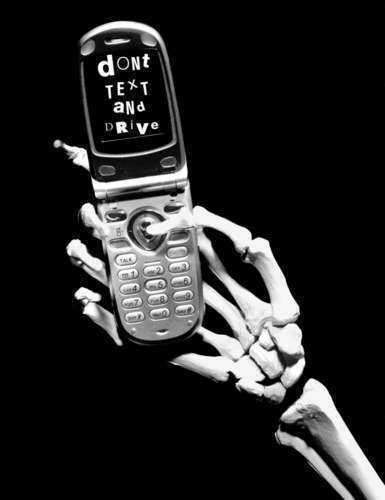Texting While Driving Statistics



If you own a vehicle in Utah, you need to register it with the Utah Division of Motor Vehicles (DMV) to comply with state laws. In this article, we provide a comprehensive guide to the process of registering your vehicle in Utah.
The following vehicles require registration in Utah:
– Passenger cars
– Trucks
– Motorcycles
– Trailers
– Recreational vehicles
– Boats
To register your vehicle, you will need:
– Proof of ownership (title or registration certificate)
– Utah driver’s license or state-issued ID
– Utah safety inspection certificate (if required for your vehicle)
– Application for Utah Title/Registration/TC-656
– Payment for registration fees and taxes
– Proof of insurance
Here is a step-by-step guide to registering your vehicle in Utah:
1. Obtain a title for your vehicle.
If your vehicle is new or was previously titled in another state, you’ll need to obtain a Utah title. You can do this by visiting a local DMV office.
2. Obtain Utah insurance.
You’ll need to provide proof of insurance when registering your vehicle. Utah requires minimum liability insurance of 25/65/15.
3. Obtain a Utah safety inspection (if required).
Some vehicles require a Utah safety inspection before they can be registered. Check with your local DMV office to see if your vehicle requires an inspection.
4. Complete the Application for Utah Title/Registration/TC-656.
The application is available on the Utah DMV website or at a local DMV office.
5. Submit your application and fees.
You can submit your application and fees in person at a local DMV office. You can also submit your application and fees by mail.
6. Receive your registration and license plates.
After your application is approved, you will receive a registration certificate and license plates. Place the license plates on the front and back of your vehicle.
Utah registration fees vary based on the type of vehicle you own. Passenger cars have a base fee of $53 for one year. Additional fees may apply for vehicles over specific weights and ages.
Other fees may apply, such as a late fee if you fail to register your vehicle by the expiration date.
Registering your vehicle in Utah is necessary to comply with state laws. By following the registration requirements outlined in this article, you can easily register your vehicle and avoid fines or penalties. Remember to keep your registration up to date to avoid any complications while operating your vehicle, and don’t forget to renew your registration every year.
The state of Utah requires vehicle owners to complete the Utah vehicle registration process for their vehicles. Vehicles must be properly titled and registered before being allowed to be driven on Utah highways and roads.
New residents to the state of Utah are allowed sixty (60) days to transfer their vehicle titles and registrations. In order to transfer them to Utah vehicle registrations and titles, new Utah residents must provide the existing vehicle title (unless it held by a lien holder in a financing agreement as collateral) and the most recent out-of-state registration.
All motor vehicles that are undergoing the Utah vehicle registration and titling process for the first time are required by Utah law to have a Vehicle Identification Number inspection done. Form TC-661, or the Certificate of Inspection, has to be completed by a Division of Motor Vehicles employee, designated contractor, licensed dealer, peace officer, or a certified safety inspector. This can also be completed by a Division of Motor Vehicles employee at the time of your UT registration.
Utah vehicle registrations are renewed each year, and official renewal notices are mailed by the Division of Motor vehicles several weeks before to your UT vehicle registration expiration date in order to help you remember to renew your UT registration. Renewing your UT registration is a very simple process.
You have many different options for renewing your Utah vehicle registration. The most convenient way to renew your UT registration is by renewing it online through the RenewalExpress service provided by the Division of Motor Vehicles. Alternatively, you can go to a local inspection station that can complete your vehicle inspections, but also renew your UT vehicle registration. You can also go to your local Department of Motor Vehicles to renew your Utah vehicle registration office or return the UT registration renewal notice with your applicable inspection certificates and UT registration fee payment by mail.
The amount you fees need to pay at the time of your Utah vehicle registration is based on the vehicle type, county, fuel type, and other factors. The taxes and fees that are assessed by the Division of Motor Vehicles during your UT vehicle registration can include the following:
• Registration fees based on the car type, weight, county of residence, and other factors
• Uniform fees
• Sales and use taxes based on the purchase price of the vehicle
• Temporary and in-transit permits & fees
• Vehicle titles and fees
• License plate fees
• Automobile driver education fee of $2.50
• Uninsured motorist identification fee $1 annually

If you own a vehicle in Vermont, you need to register it with the Vermont Agency of Transportation to comply with state laws. In this article, we provide a comprehensive guide to the process of registering your vehicle in Vermont.
The following vehicles require registration in Vermont:
– Passenger cars
– Trucks
– Motorcycles
– Trailers
– Recreational vehicles
– Boats
To register your vehicle, you will need:
– Proof of ownership (title or registration certificate)
– Vermont driver’s license or state-issued ID
– Vermont safety and emissions inspection certificate (if required for your vehicle)
– Vermont Tax Exemption Certificate (if applicable)
– Vermont Registration, Tax, and Title application
– Payment for registration fees and taxes
– Proof of insurance
Here is a step-by-step guide to registering your vehicle in Vermont:
1. Obtain a title for your vehicle.
If your vehicle is new or was previously titled in another state, you’ll need to obtain a Vermont title. You can do this by visiting a local DMV office.
2. Obtain Vermont insurance.
You’ll need to provide proof of insurance when registering your vehicle. Vermont requires minimum liability insurance of 25/50/10.
3. Obtain a Vermont safety and emissions inspection (if required).
Some vehicles require a Vermont safety and emissions inspection before they can be registered. Check with your local DMV office to see if your vehicle requires an inspection.
4. Obtain a Vermont Tax Exemption Certificate (if applicable).
If you qualify for certain exemptions, such as for military veterans or low-income individuals, you may be able to obtain a Tax Exemption Certificate to waive certain registration fees.
5. Complete the Vermont Registration, Tax, and Title application.
The application is available on the Vermont DMV website or at a local DMV office.
6. Submit your application and fees.
You can submit your application and fees in person at a local DMV office. You can also submit your application and fees by mail.
7. Receive your registration and license plates.
After your application is approved, you will receive a registration certificate and license plates. Place the license plates on the front and back of your vehicle.
Vermont registration fees vary based on the type of vehicle you own. Passenger cars have a base fee of $76 for one year. Additional fees may apply for vehicles over specific weights and ages.
Other fees may apply, such as a late fee if you fail to register your vehicle by the expiration date.
Registering your vehicle in Vermont is necessary to comply with state laws. By following the registration requirements outlined in this article, you can easily register your vehicle and avoid fines or penalties. Remember to keep your registration up to date to avoid any complications while operating your vehicle, and don’t forget to renew your registration every year.
The state of Vermont requires vehicle owners to complete the Vermont vehicle registration process for their vehicles. Motor vehicles must be properly titled and registered with the Vermont Department of Motor Vehicles before being allowed to be driven on Vermont highways and roads. The state requires passenger cars, all terrain, farm vehicles, motorcycles, municipal vehicles, tractors, trucks, and others to have proper VT registration.
All new Vermont residents must obtain a Vermont vehicle registration after establishing residency in the state. This has to be done no longer than sixty (60) days after moving to the state of Vermont or if your vehicle’s out-of-state registration expires before this period of time.
In order to get your Vermont vehicle registration, you must provide the Vermont Department of Motor Vehicles with the following documents and information:
• A Filled out Registration Application form for your VT vehicle registration.
• The vehicle title. If the vehicle title is held by a lien holder, you must provide the full name and address of the vehicle’s lien holder and the original vehicle registration from the previous state.
• A current odometer reading for the VT registration process.
• Proof of the payment of tax paid on the vehicle in the previous state. This is not necessary if the vehicle is more than 3 years old and you have proof of registration or vehicle title for the past 3 years.
• Vehicle Identification Number Verification.
• Payment of fees and taxes.
• Proof of sufficient liability insurance coverage for a Vermont vehicle registration.
After completing the Vermont vehicle registration process you will have 15 days to get an inspection at a Vermont Licensed Inspection Station. During the first-time VT vehicle registration process, you will also be issued new Vermont license plates.
Vermont requires all VT registrations to be renewed. This can be done online, in person at the main Department of Motor Vehicles office or participating town clerk’s office, at a self-serve kiosk at most branch offices in Vermont, or by mail.
Vermont registrants normally receive a computer-generated VT registration renewal application in the mail about 3 weeks before the current registration expires. Vehicle owners can then sign the VT vehicle registration renewal application and return with the renewal fee necessary.
Your renewed vehicle registration will consist of the Vermont vehicle registration certificate and decals which must be placed on your license.
There are applicable fees for the VT vehicle registration process. All of these payments must be made as either checks or money orders to the Department of Motor Vehicles. These fees include the following:
• Registration fees: Depend on the type of vehicle and the period of registration.
• License plate fees: Standard t plate fee is $5, replacement plates are $10, and specialty plates have various prices depending on style.
• Tax and title fees

If you own a vehicle in Virginia, you need to register it with the Virginia Department of Motor Vehicles (DMV) to comply with state laws. In this article, we provide a comprehensive guide to the process of registering your vehicle in Virginia.
The following vehicles require registration in Virginia:
– Passenger cars
– Trucks
– Motorcycles
– Trailers
– Recreational vehicles
– Boats
To register your vehicle, you will need:
– Proof of ownership (title or registration certificate)
– Virginia driver’s license or state-issued ID
– Virginia safety inspection certificate (if required for your vehicle)
– Application for registration and title
– Payment for registration fees and taxes
– Proof of insurance
Here is a step-by-step guide to registering your vehicle in Virginia:
1. Obtain a title for your vehicle.
If your vehicle is new or was previously titled in another state, you’ll need to obtain a Virginia title. You can do this by visiting a local DMV office.
2. Obtain Virginia insurance.
You’ll need to provide proof of insurance when registering your vehicle. Virginia requires minimum liability insurance of 25/50/20.
3. Obtain a Virginia safety inspection (if required).
Most vehicles require a Virginia safety inspection before they can be registered. Check with your local DMV office to see if your vehicle requires an inspection.
4. Complete the Application for Registration and Title.
The application is available on the Virginia DMV website or at a local DMV office.
5. Submit your application and fees.
You can submit your application and fees in person at a local DMV office. You can also submit your application and fees by mail.
6. Receive your registration and license plates.
After your application is approved, you will receive a registration certificate and license plates. Place the license plates on the front and back of your vehicle.
Virginia registration fees vary based on the type of vehicle you own. Passenger cars have a base fee of $40.75 for one year. Additional fees may apply for vehicles over specific weights and ages.
Other fees may apply, such as a late fee if you fail to register your vehicle by the expiration date.
Registering your vehicle in Virginia is necessary to comply with state laws. By following the registration requirements outlined in this article, you can easily register your vehicle and avoid fines or penalties. Remember to keep your registration up to date to avoid any complications while operating your vehicle, and don’t forget to renew your registration every year.
Before you get on the road with your motor vehicle, tractor truck, trailer, motorcycle, or semitrailer, you are required by law to properly title your vehicle and apply for Virginia vehicle registration at a Virginia Department of Motor Vehicles office. In order to do so, you will need to provide additional information to correctly complete your Virginia vehicle registration and titling if you are a new resident or if you lease your motor vehicle.
Your motor vehicle has to pass an annual safety inspection and show a valid safety inspection decal before it can be operated in the state Virginia. Violating Virginia inspection laws can result in a severe fine and a mark on your driving record. Because of this, you must get an inspection as a part of your VA vehicle registration.
Before starting the Virginia vehicle registration process, you must have the following documents available:
• Have your vehicle titled in Virginia for your VA vehicle registration.
• Complete Form VSA 14 Application for Registration or Form VSA 123 Hire Vehicles Registration Application for your VA registration.
• An emissions inspection for your vehicle if you are in Arlington, Loudoun, Stratford, Fairfax, or Prince William County, or in the cities of Fairfax, Alexandria, Falls Church, Manassas Park, or Manassas. Motorcycles do not need to have an emissions inspection completed for a VA registration.
• Proof of liability insurance for your vehicle. Your policy must meet minimum requirements placed for the VA vehicle registration process or you must pay the uninsured vehicle fee. Your insurance carrier has to be authorized to provide insurance in the state of Virginia. Minimum coverage includes $25,000 for one person’s bodily injury/death, $50,000 for two people’s bodily injury/death, and $20,000 for property damage.
Your VA vehicle registration fees depend on the type of vehicle its weight. Common VA vehicle registration fees and additional fees include the following:
• Passenger vehicle up to 4,000 pounds: $40.75
• Passenger over 4,000 pounds: $45.75
• Motorcycle: $28.75
• Pickup Truck up to 4,000 pounds: $40.75
• Pickup Truck over 4,000 pounds gross weight: $45.75
• Pickup Truck between 6,501-7,500 pounds gross weight: $51.75
• Trip Permit: $5.00
• Replacement Virginia vehicle registration card: $2.00
• VA vehicle Registration transfer fee $2.00
You can pay your VA vehicle registration fees with cash, check, e-check, check card, credit card, or money order. The Virginia Department of Motor Vehicles accepts MasterCard, Discover, Visa and American Express for all fees.
After your first VA vehicle registration, the Department of Motor Vehicles will notify you about your upcoming VA registration renewal. You can get these notifications either by mail, email, text message, or phone by signing up for these e-notifications. Virginia provides you with the option to renew your VA registration by online, telephone, by mail, or at any Department of Motor Vehicles select center. If you choose to renew your VA vehicle registration in person, there is an additional $5 fee.

If you own a vehicle in Washington, you need to register it with the Washington State Department of Licensing to comply with state laws. In this article, we provide a comprehensive guide to the process of registering your vehicle in Washington.
The following vehicles require registration in Washington:
– Passenger cars
– Trucks
– Motorcycles
– Trailers
– Recreational vehicles
– Boats
To register your vehicle, you will need:
– Proof of ownership (title or registration certificate)
– Washington driver’s license or state-issued ID
– Washington emissions inspection certificate (if applicable)
– Washington Certificate of Compliance (if applicable)
– Application for Title and Registration
– Payment for registration fees and taxes
– Proof of insurance
Here is a step-by-step guide to registering your vehicle in Washington:
1. Obtain a title for your vehicle.
If your vehicle is new or was previously titled in another state, you’ll need to obtain a Washington title. You can do this by visiting a local Licensing Service Office or Vehicle Licensing Office.
2. Obtain Washington insurance.
You’ll need to provide proof of insurance when registering your vehicle. Washington requires minimum liability insurance of 25/50/10.
3. Obtain a Washington emissions inspection (if applicable).
If you live in the emissions testing area of Washington, your vehicle may require an emissions inspection before it can be registered. Check with your local Licensing Service Office or Vehicle Licensing Office to see if your vehicle requires an inspection.
4. Obtain a Washington Certificate of Compliance (if applicable).
If your vehicle was previously titled in another state, it may require a Certificate of Compliance from the Washington State Patrol before it can be registered in Washington.
5. Complete the Application for Title and Registration.
The application is available on the Washington State Department of Licensing website or at a local Licensing Service Office or Vehicle Licensing Office.
6. Submit your application and fees.
You can submit your application and fees in person at a local Licensing Service Office or Vehicle Licensing Office. You can also submit your application and fees by mail.
7. Receive your registration and license plates.
After your application is approved, you will receive a registration certificate and license plates. Place the license plates on the front and back of your vehicle.
Washington registration fees vary based on the type of vehicle you own. Passenger cars have a base fee of $30 for one year. Additional fees may apply for vehicles over specific weights and ages.
Other fees may apply, such as a late fee if you fail to register your vehicle by the expiration date.
Registering your vehicle in Washington is necessary to comply with state laws. By following the registration requirements outlined in this article, you can easily register your vehicle and avoid fines or penalties. Remember to keep your registration up to date to avoid any complications while operating your vehicle, and don’t forget to renew your registration every year.
The state of Washington requires vehicle owners to complete the Washington vehicle registration process for their vehicles. Motor vehicles must be properly titled and registered with the Washington State Department of Licensing before being allowed to be driven on Washington highways and roads.
When you become a resident of Washington State, you have thirty (30) days to correctly title your vehicle and apply for Washington vehicle register. Once you do so, you will be given Washington license plates. In order to complete the WA vehicle registration process, you can submit your application to your local vehicle licensing office either in person or by mail.
Before beginning the WA registration process, you must make sure you meet all the requirements that are applicable apply to your motor vehicle. If your motor vehicle is a 2009 model or newer SUV, passenger van, or light-duty truck, it must meet necessary emission standards in order to receive its WA vehicle registration.
If your motor vehicle is ten years old or newer, you must also submit the Odometer Disclosure Statement along with your WA registration application. In certain counties of Washington, you may also need to submit the results of an emissions test for your vehicle.
If the vehicle weight is not on your title, you may have to present a weight slip for your vehicle for your Washington vehicle registration. You may be able to get this from your local vehicle licensing office.
Once you have satisfied all of these requirements for the WA vehicle registration, you can go to a Department of licensing office and present the following documents and forms:
• Out-of-state title or photocopy if there is a lien holder.
• Vehicle Certificate of Ownership Application. This must be signed by all registered owners.
• Applicable fees must be paid as well. These fees depend on your jurisdiction, weight of your vehicle, and choice of license plates.
You must still meet all the special requirements discussed in the previous section. You can then submit the following documents by mail for your Washington vehicle registration:
• Out-of-state vehicle title or a photocopy of the title if there is a lien holder.
• Notarized Vehicle Certificate of Ownership Application with all registered owner signature.
• Applicable Washington vehicle registration fees
You can mail your Washington vehicle registration application and relevant documents and fees to any vehicle licensing office location.
WA registration and title fees depend on many factors, including vehicle weight, jurisdiction, and plates. If you are registering for the first time, you should contact your local vehicle licensing office to find out the cost of WA registration.
While the state of Washington sends renewal notices, you can renew your registration without it either by mail, in person, or online. You can renew your registration up to six months before your current WA vehicle registration’s expiration date. Renewal fees depend on the type of WA vehicle registration, weight, and other factors. Some common Washington vehicle registration fees include the following:
• Passenger vehicles up to 4,000 pounds: $43.75
• Passenger vehicles between 4,001 and 6,000 pounds: $53.75
• Passenger vehicles between 6,001 and 8,000 pounds: $63.75
• Motorcycles: $43.75
• Subagent fee at a licensing office: $5

If you own a vehicle in West Virginia, you need to register it with the West Virginia Department of Transportation to comply with state laws. In this article, we provide a comprehensive guide to the process of registering your vehicle in West Virginia.
The following vehicles require registration in West Virginia:
– Passenger cars
– Trucks
– Motorcycles
– Trailers
– Recreational vehicles
– Boats
To register your vehicle, you will need:
– Proof of ownership (title or registration certificate)
– West Virginia driver’s license or state-issued ID
– West Virginia State Police inspection certificate (if applicable)
– Application for Certificate of Title and Registration
– Payment for registration fees and taxes
– Proof of insurance
Here is a step-by-step guide to registering your vehicle in West Virginia:
1. Obtain a title for your vehicle.
If your vehicle is new or was previously titled in another state, you’ll need to obtain a West Virginia title. You can do this by visiting a local DMV office.
2. Obtain West Virginia insurance.
You’ll need to provide proof of insurance when registering your vehicle. West Virginia requires minimum liability insurance of 25/50/25.
3. Obtain a West Virginia State Police inspection (if applicable).
If your vehicle is over a certain age or has been rebuilt, it may require a West Virginia State Police inspection before it can be registered. Check with your local DMV office to see if your vehicle requires an inspection.
4. Complete the Application for Certificate of Title and Registration.
The application is available on the West Virginia Department of Transportation website or at a local DMV office.
5. Submit your application and fees.
You can submit your application and fees in person at a local DMV office.
6. Receive your registration and license plates.
After your application is approved, you will receive a registration certificate and license plates. Place the license plates on the front and back of your vehicle.
West Virginia registration fees vary based on the type of vehicle you own. Passenger cars have a base fee of $51.50 for one year. Additional fees may apply for vehicles over specific weights and ages.
Other fees may apply, such as a late fee if you fail to register your vehicle by the expiration date.
Registering your vehicle in West Virginia is necessary to comply with state laws. By following the registration requirements outlined in this article, you can easily register your vehicle and avoid fines or penalties. Remember to keep your registration up to date to avoid any complications while operating your vehicle, and don’t forget to renew your registration every year.
Residents of the state of West Virginia must properly title and register their motor vehicles with the West Virginia Division of Motor Vehicles. Motor vehicles without any liens can be titled and registered either by mail or in person at a Division of Motor Vehicles Regional Offices or at a privately-owned license services. A car dealer can also take care of the necessary paperwork for a West Virginia Vehicle registration on your behalf.
New residents of West Virginia must title their vehicles and obtain a West Virginia vehicle registration within thirty days of establishing residency in the state.
If you are a new resident of West Virginia and your vehicle has an out-of-state title in your name and there is no lien holder on the vehicle title, you must submit the following documents for your West Virginia Vehicle registration:
• Out-of-state title for a VA vehicle registration.
• Form DMV-1-TR, West Virginia title application for a VA registration.
• Form DMV-TM-1, Odometer disclosure statement
• Insurance information for the VA vehicle registration.
If you are a new resident of West Virginia and your vehicle title is held by a lien holder, you must provide the following documents for your West Virginia Vehicle Registration:
• Form DMV-1-TR Application for Certificate of Title for a VA vehicle registration.
• Form DMV-TM-1 Odometer disclosure statement for a VA registration.
• Insurance information, this can be on the title application.
• A copy of the vehicle title or an electronic lien printout of your out-of-state vehicle title. If these are not available you can use a letter from your lien holder for your VA registration.
The fees for an initial VA vehicle registration include a standard registration fee of $30, $10 title fee, and a $5 lien fee if it is applicable. There is also normally a 5% sales tax for titling on the vehicles’ value, but it does not apply to new residents of West Virginia who have a vehicle titled in another state.
WV vehicle registration renewal notices are sent by the Division of Motor Vehicles for your registration by mail approximately thirty days before the WV registration expires. The accompanying renewal form can be returned with the insurance information, personal property tax receipt, and appropriate fee by mail. Alternatively, WV registrations can also be completed through a Division of Motor Vehicles regional office. Furthermore, county sheriff offices can also renew passenger vehicles and motorcycle WV registrations.



